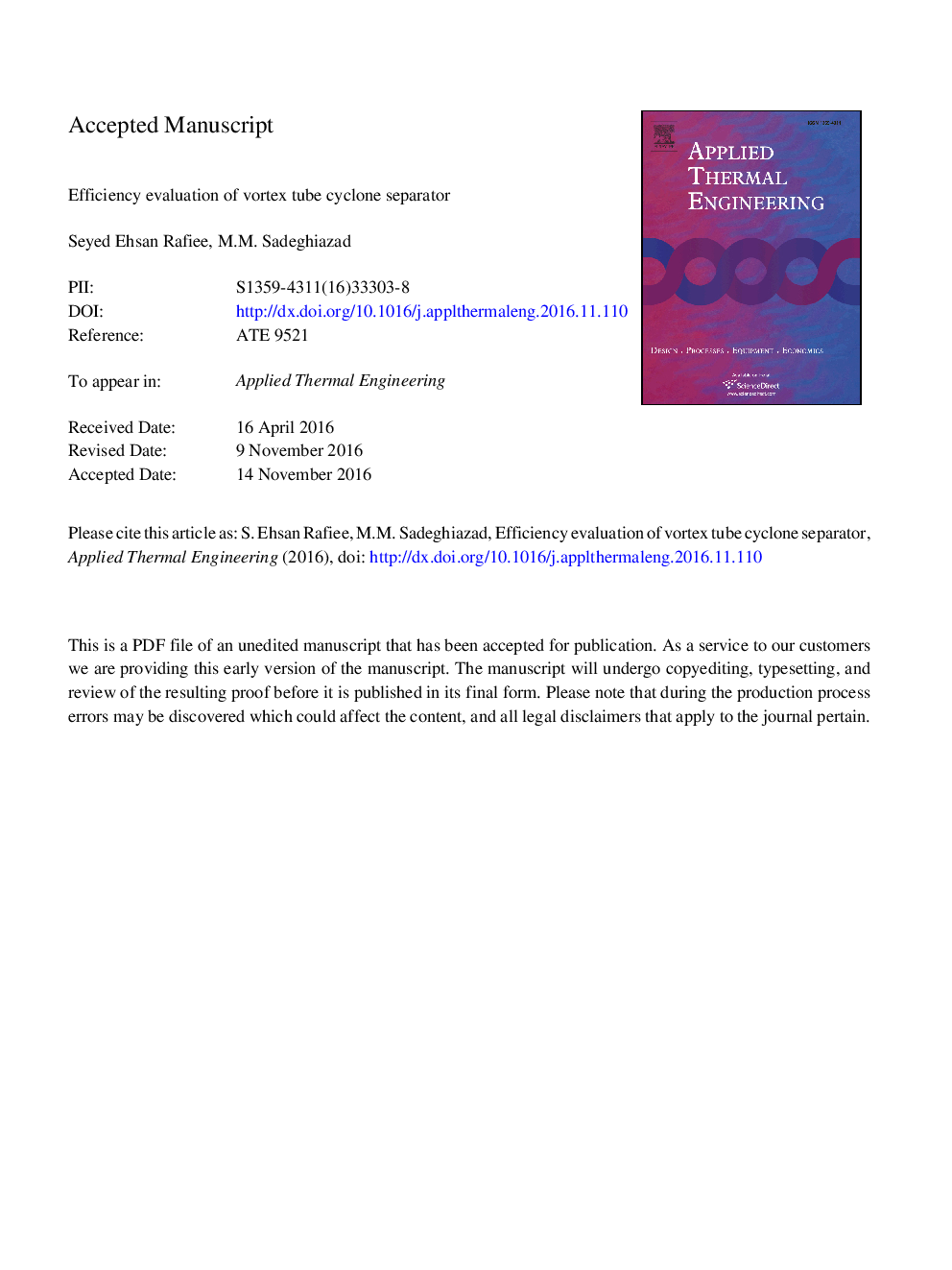| Article ID | Journal | Published Year | Pages | File Type |
|---|---|---|---|---|
| 4991958 | Applied Thermal Engineering | 2017 | 87 Pages |
Abstract
The aim of the present investigation is analysis on separation phenomenon in a convergent cyclone separator affected by the structural factors including; throttle angle (15-45°), nondimensional throttle diameter (0.444-0.722), convergence main tube angle (2-12°), nondimensional convergent length (20-22.22), injector slots number (2-6) and injection pressure (4.5-6.5 bar), as well as the numerical optimization of these parameters in terms of the separation efficiency using 3D-CFD methods (RSM). The initial experimental results show that, the separation improves with an increase in the nondimensional throttle diameter up to DRth = 0.611, then beyond DRth = 0.611, the separation capabilities are decreased. Also, the cyclone equipped with the throttle angle of α = 30° provides 43.76% and 50.60% higher separation efficiencies as compared to the basic model. Furthermore, there are the initial optimum values (experiments) for the convergence angle and nondimensional length of main tube as β = 10° and LN = 21.66. Also, the separation efficiency improves with an increase in the slot number up to N = 4. The comparison between the computed and laboratory outputs presents a favorable agreement with the maximum and minimum relative differences of 6.22% and 0.93%, respectively. In this study, the experiments determine the correct ranges for the factors, then, the exact optimum values will be selected by the CFD models.
Keywords
Related Topics
Physical Sciences and Engineering
Chemical Engineering
Fluid Flow and Transfer Processes
Authors
Seyed Ehsan Rafiee, M.M. Sadeghiazad,
